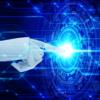
Implementing retrieval-augmented generation (RAG) architecture into knowledge bases transforms data utilization by equipping users with swift and accurate information while enabling subject matter experts to return their focus to business-critical tasks.
Knowledge bases consolidate vast amounts of information into a single, accessible repository. Theoretically, these hubs should enhance efficiency and support informed decision-making by providing a “one-stop shop” for information. The truth is actual user experiences often fall short.
Extracting specific information from knowledge bases can be frustrating and time-consuming, requiring the use of precise, and occasionally obscure, search terms in queries and the needle-in-a-haystack task of combing through lengthy documents for the desired nuggets of information.
The fundamental challenge is that users can’t effectively “talk to the data” within knowledge bases, leading to inefficiencies and frustration. Retrieval-augmented generation (RAG) architecture redefines knowledge base interactions by enabling human-like conversations and delivering precise, thorough, and accurate answers based on real-time data.
What is RAG architecture?
RAG architecture is an advanced artificial intelligence (AI) framework designed to enhance information retrieval and interaction. By combining retrieval-based methods with generative models, RAG leverages the strengths of both approaches to provide more accurate and contextually relevant responses.
Unlike traditional AI or even standalone generative AI models, RAG architectures are not limited by a static training set. Instead, they can connect to and retrieve data from large databases or external sources in real time to find answers to user queries.
We can think of it this way: With traditional AI, training is like handing the system a book containing all the information it needs to perform its tasks. If the system encounters a situation that isn’t covered in the book, you need to provide a new edition with the updated information. With RAG architecture, instead of giving the system a single book, you give it access to a library where it can continuously learn from an ever-growing collection of books that are regularly updated.
Key components and functionalities of RAG
RAG architecture comprises a series of factors that work in tandem to enhance the quality of responses and user experiences:
- The retriever component searches a vast dataset to find relevant documents or data snippets based on the user’s query. It uses sophisticated algorithms to rank and select the most pertinent and most current pieces of information.
- The generator component uses the information retrieved to construct detailed and contextually appropriate responses. It employs advanced natural language processing (NLP) techniques to ensure the generated content is coherent and relevant to the user’s needs.
- The encoder processes the user’s query and converts it into a format that both the retriever and the generator can understand and utilize effectively, ensuring seamless communication between components and accurate interpretation of user input.
- The integration layer coordinates the interaction between the retriever and the generator, ensuring the system functions smoothly and efficiently.
How RAG architecture enhances knowledge base interactions
Improved accuracy
By combining retrieval and generation, RAG provides precise and contextually relevant answers. This dual approach ensures users receive information that is both accurate and comprehensive, reducing the need for further searching.
Up-to-date information
As long as the knowledge base is kept up to date and properly indexed, the RAG architecture can always deliver the most current information without having to be retrained.
Natural interactions
RAG enables more human-like conversations with knowledge bases. Users can ask questions in natural language and receive responses that are easy to understand and directly applicable to their needs.
Efficiency
Integrating retrieval and generation capabilities allows RAG to deliver quick, efficient responses.
Scalability
RAG architecture is highly scalable, making it suitable for organizations of all sizes, thanks to its ability to handle vast amounts of data and user queries without compromising performance.
Operational benefits of integrating RAG architecture for knowledge bases
Higher-quality, more accurate answers
By combining retrieval-based methods with generative models, RAG can draw from a vast pool of information and deliver responses that are contextually relevant and precise. This dual approach ensures that users receive comprehensive and up-to-date answers, reducing the likelihood of misinformation and the need for follow-up queries.
Faster retrieval of relevant information
The retriever component efficiently scans large datasets to identify pertinent documents and data snippets, while the generator synthesizes retrieved information into coherent responses. This streamlined process enables users to access the information they need quickly.
Enhanced user experience with more natural and intuitive interactions
Because users can engage with knowledge bases using natural language, the system is highly accessible and user-friendly. The conversational nature of RAG-driven interactions mimics human dialogue, allowing users to ask questions and receive answers in a straightforward, conversational style.
Implementing RAG architecture for knowledge base interactions
Integrating RAG architecture into a knowledge base can transform how users interact with information, making data retrieval faster and more intuitive. To achieve this, it’s essential to follow a structured approach, considering the current state of the knowledge base, key integration factors, and best practices for implementation.
Start with a current state assessment
- Evaluate existing data: Conduct a thorough audit of the current knowledge base to identify the types and volumes of data stored. Determine which data sets are frequently accessed and which ones are underutilized.
- Identify pain points: Gather feedback from users to understand the challenges they face when interacting with the knowledge base, which may include difficulty in finding specific information, slow retrieval times, and irrelevant search results.
- Analyze search patterns: Review search logs and user behavior analytics to identify common queries and search terms. This analysis can help pinpoint areas where the current system falls short and highlight opportunities for improvement.
Keep key considerations in mind
- Well-indexed data sources: Successful implementation of RAG architecture involves meticulous indexing of data sources. For instance, in the compliance project above, documents were indexed on a SharePoint site, allowing for efficient querying and up-to-date information retrieval.
- Rigorous data governance: Clean, well-maintained data is critical for the success of RAG systems. Enterprises must ensure that their data is top-notch, well-curated, and regularly updated to optimize the performance of RAG architecture.
- Compatibility with existing systems: Ensure that the RAG architecture can seamlessly integrate with the current knowledge base platform.
- Data security and privacy concerns: Address data security and privacy issues by implementing robust encryption and access control measures. Ensure that sensitive information is protected and used in accordance with relevant regulations such as GDPR or HIPAA.
- Training and support for end users: Provide resources to help users adapt to the new system, including user guides, training sessions, and ongoing technical support.
Follow best practices for successful implementation
- Start with a pilot program to test and refine the integration: Begin with a small-scale pilot to test the RAG architecture’s integration with the knowledge base. Use this pilot to identify potential issues and refine the system before a full-scale rollout.
- Continuously monitor and evaluate the system’s performance: Regularly track key performance indicators (KPIs) such as search accuracy, response times, and user satisfaction, and use this data to make ongoing improvements.
- Gather feedback from users to improve the interaction experience: Encourage users to provide feedback on their experiences and use their responses to drive continuous improvement.
Leveraging RAG architecture for optimal data utilization
Integrating RAG architecture into knowledge bases represents a significant leap forward in how organizations manage and utilize information. This advanced AI framework not only improves the accuracy and relevance of responses, but also transforms the user experience by enabling more natural, conversational interactions. Users can find the information they need quickly and efficiently, which enhances productivity and decision-making processes. Subject matter experts are freed from routine inquiries, allowing them to focus on more complex and strategic tasks.
Looking ahead, the adoption of RAG architecture in knowledge bases is setting a new benchmark for information retrieval and user interaction. Organizations that implement this technology will benefit from a more agile and responsive knowledge management system, leading to better outcomes for both employees and customers. Continuous advancements in AI and machine learning will further refine RAG capabilities, ensuring that knowledge bases remain dynamic, up-to-date, and highly effective in meeting user needs.
Dave Perrin is a Senior Developer in Logic20/20’s Advanced Analytics practice. During his time at Logic20/20, he has worked on a variety of projects involving generative AI, computer vision, and risk mitigation.
is a member of
















